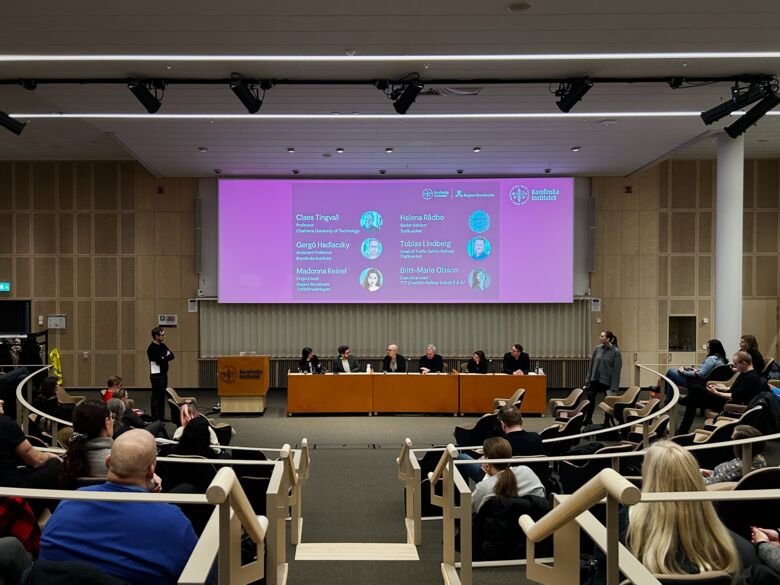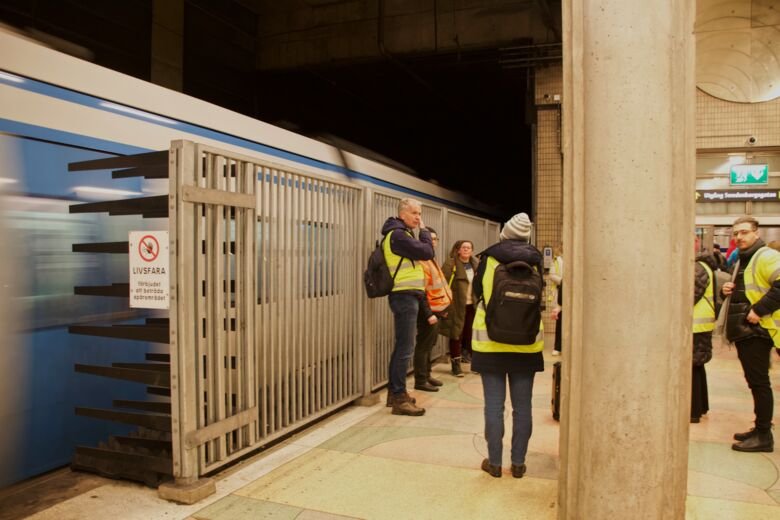Good examples of suicide prevention measures in railway traffic

On the 4th and 5th of December, national and international researchers, experts, and stakeholders met to listen to and discuss good examples of suicide prevention interventions within railbound traffic. The event was organized by the National Centre for Suicide Research and Prevention (NASP) at Karolinska Institutet and Region Stockholm.
The two network days began with a full-day conference on the 4th of December, organized by the National Centre for Suicide Research and Prevention (NASP), with funding from Karolinska Institutet, Region Stockholm (Health and Medical Care Administration/Health Care Services Stockholm County) and the Swedish Transport Administration.
The conference morning had a national framework with presentations from several Swedish researchers and experts in the field of suicide and railbound traffic. At the conference, Professor Claes Tingvall, from Chalmers University of Technology, who once was instrumental in introducing the zero vision within the Swedish road transport system, presented the philosophy behind the zero vision and how it relates to work within railbound traffic. Among others, Johan Fredin-Knutzén, a doctoral student and expert at NASP, spoke about various ongoing projects with suicide prevention interventions in Swedish railbound traffic, and Gergö Hadlaczky, adjunct researcher and head of unit at NASP, spoke about how preventive interventions can provide crucial additional time for intervention, and emphasized that time itself can be considered a significant suicide prevention measure. Anna-Lena Andersson, an expert at NASP, presented a 3-year project aimed at strengthening and creating routines for cooperation between public transport, municipality, and emergency services in connection with suicide alarms.
The afternoon, with an international focus, was dedicated to listening to several good examples of suicide prevention interventions in rail traffic and their effect, with speakers from England, the Netherlands, Denmark, and France. The day concluded with a panel discussion with representatives from NASP, Chalmers University of Technology, ‘Together for Trains on Time’ (an initiative from the Railway Industry Cooperation Forum (JBS)), the Swedish Transport Administration, and the Public Transport Administration at Region Stockholm.
– Almost 10% of all completed suicides that occur in Sweden each year happen in the transport system, and most of them in railbound traffic. Implementing and developing preventive interventions to reduce this figure is a crucial issue. Such interventions can not only save lives, but also contribute positively to society by enhancing the efficiency of transport. Today’s conference illustrates that it is possible to implement suicide prevention interventions, and that there is an interest in working on this issue in Sweden, says Johan Fredin-Knutzén, the responsible organizer of the conference from NASP.

The day after, on December 5th, the Trespass and Suicide Prevention Network (TreSP-Network), consisting of infrastructure owners and experts from around the world, met along with several of the speakers from the previous day. This network meeting was the 8th in the series, and the morning meeting was opened by TreSP’s chairperson Ann Mills, Deputy Director for System Safety and Health at the Railway Safety and Standard Boards (RSSB) in England. During the meeting, Johan Fredin-Knutzén and Gergö Hadlaczky presented again, along with research assistant Danielle Berglund and lecturer Vladimir Carli from NASP. In the afternoon, the network made a technical visit to several subway and commuter train stations in Stockholm, to experience new barriers used for preventing unauthorized track trespassing and suicide prevention.
